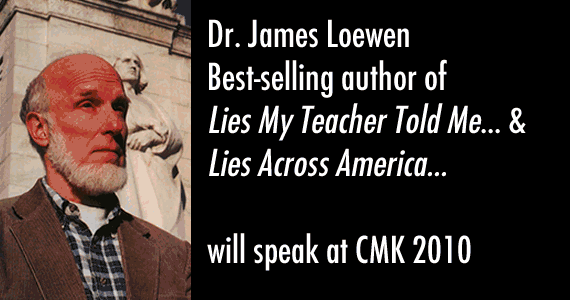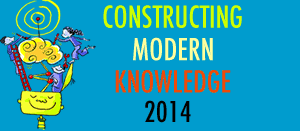 In the last few years, it seemed like there was an endless stream of new Web 2.0 applications. If you didn’t like one, twenty new ones would appear. Now that party is over. A while back I wrote a post about this, Web 2.0, the meltdown, and education.
In the last few years, it seemed like there was an endless stream of new Web 2.0 applications. If you didn’t like one, twenty new ones would appear. Now that party is over. A while back I wrote a post about this, Web 2.0, the meltdown, and education.
But it’s not at all clear cut who will make it through the tough times. There’s a lot of good stuff out there that is great for classroom use. But we know that lots of these tools are made by companies that are simply going to pack up and go home in the near future. So how can educators figure out which of their favorite tools will remain standing?
Here are ten questions and thoughts to ponder.
1. Do they make money?
Here’s the big question. A company with no visible means of support is not living on love. Someone is taking home a paycheck. Someone is paying the server bill. These companies are either someone’s home brew project in mom’s basement, or they have investors. Investor money runs out eventually, and there isn’t going to be a lot of new investment anytime soon. If there is no revenue, they have less of a chance to survive.
Ad revenue is almost as shaky as no revenue, since in a recession, ad rates tend to fall like a rock. Who clicks on banner ads anyway? People stop kidding themselves about these things when the money runs out.
Some small, individual projects can be very useful, but if they are cursed with popularity, they will need more people, servers, and other stuff that costs money. Maybe the key is to keep your favorites to yourself. Stop sharing! (OK, probably not the best answer.)
2. Spend some time with your favorite search engine.
All US public companies have to file documents with the government that give details on their finances. These are available online. Plus, if they are large, analysts and the press write about them. Stock price is an indicator too, if it’s gone down (worse than most!) that’s an indication something is wrong. In cases like Yahoo, all the bad news about failed mergers, the CEO leaving, and things like this are an indication of a company in crisis. It’s not smart to depend on them.
A non-public company is harder to find out about. But in my book, the more self-aggrandizing publicity a company has gone after, the more likely they are in it just for a quick flip. So for me, I’ll take the company with less news about awards, big PR blitzes, and showing up at every social media event.
In contrast, take Zoho, which makes productivity and collaboration web applications. They just continue to crank out good, solid products and services. Plus, they have a business model - they sell their premium services. And they make money. Check out this interview with Zoho CEO Sridhar Vembu, about how he and his brother bootstrapped the company (meaning no outside investment) while his wife earned enough money to support the family. Smart, sensible, and pragmatic.
Are they a better long-term bet than Google Docs for web-based productivity tools? Who knows?
3. Do they have investors and how long will the money last?
Try searching on the company or tool name plus words like “invest”, “funding”, “owner”, “sell”, “layoff”, or “round”.
For example, if you are thinking about starting a local district professional development network using Ning as the basis, you might be very worried that they will just disappear. Google “Ning funding” and you find several sites that confirm that Ning received $44M in July 2007, and another $60M in April 2008. This article makes some guesses about how much money Ning makes - only $2M per year on subscriptions and ads, so they certainly need to figure out how to make money. However, $100M is a whole lotta money to skate on while you figure things out, so they may make it through to the other side.
A company that’s trying to go big but got a less than $5M investment more than a year ago might be having serious problems.
Another measure is how many employees they have. A completely rough estimate is that every employee costs $100,000 - $200,000 per year. The high side is companies that need vast server farms or other exceptional costs. But rule of thumb, a company with 10-20 employees, a $2M investment, but no income can only last a year.
Linden Labs, the makers of Second Life, says they are doing great with 300 employees. They raised $11M in funding in 2006, and $8M a few years before that. Obviously they are making enough money from Second Life to sustain themselves or they would have gone out of business already. This blog from a venture capital firm estimates their revenue at $8M per month, or nearly $100M per year. This blog does the same calculation and guesses their expenses are about $30M for employees, plus another $10M for office space, servers, and other stuff. So, if these guys are right, Linden Labs is making at least $40M profit per year on Second Life.
The question is, if you are a school about to drop a lot of money and resources on a Second Life presence — will the economy, or some newer, sexier virtual world cause their subscriptions to drop and sales to slide? Most of their money is made on virtual land sales, not subscriptions, and if I had to guess, only new subscribers buy a lot of land. After a certain amount of time, people tend to “settle down.” But still, $40M a year is a nice cushion. It’s hard to be sure if all the speculation is true, since Second Life is not a public company. But my guess would be that Second Life will still be around for a few years. And better yet, will still have time to cultivate educators and cater to their special needs.
Yes, I know Second Life is not technically a Web 2.0 app, but neither is Google Earth or Twitterific or half a dozen others — everyone lumps these things together. Who am I to try to untangle the misunderstanding of what Web 2.0 is?
4. Layoffs?
Actually, this is a mixed bag. Layoffs can be the sign that a company is intelligently trimming its sails to ride through the storm. However, layoffs that cut to the bone are a sign that the company is about the crash and burn. How do you know which is which? That’s hard, especially with small, startup companies. There are sites like TechCrunch that watch the technology industry, or websites like this that track startup companies going under (the name contains a four letter word, don’t say I didn’t warn you), but layoff news is often full of unsubstantiated rumors.
5. Gut check — does this make sense?
C’mon, who really thought a social network for people who love their sneakers was a good idea. Let’s get real, this was simply a couple of guys trying to cash in on the social media craze.
Not to keep picking on Yahoo, but there was a recent announcement that Yahoo for Teachers has been shut down. This was going to be a social networking site for teachers offering portfolios, networks, and other free goodies. Now the service has been cancelled by Yahoo, and the former URL (teachers.yahoo.com) redirects to the main Yahoo page. But a new site, called Edtuit, says it “… picks up where Yahoo! for Teachers left off.” But look around the site, there are no names, no explanation of who they are, or why a teacher should believe any of this. If Yahoo couldn’t make it work, how will they?
To me, this kind of announcement sends up a big red flag. Call me when they go live in “Fall 2008″ — oops!
6. How big are they?
Strangely, the ends of the continuum will win. Big, big companies tend to have resources and deep pockets. Small companies can survive like cockroaches. People can work virtually, keep their day jobs, live in mom’s basement, or on a spouse’s paycheck. Some of these are student projects. Medium size companies have problems. Keeping 10-150 people employed is one of the toughest jobs ever.
Take Wordle, for example. Wordle is a web toy that makes pretty word clouds out of text. On the Wordle website, there is one person’s name listed with an email address. The blog says he’s an IBM engineer who wrote the code in his spare time. No investors, no PR and marketing budget, just a guy who likes words.
Will little, one programmer projects like Wordle survive? Sure, until he or she loses interest (or graduates from high school.)
7. What’s your exit strategy?
If you are in love with ustream, Qik, Flickr (uh oh, owned by Yahoo!), or any free service for that matter, don’t assume that their business model will stay the same, and that your use won’t be affected. A few will just disappear without a word. But there is no doubt that all these companies will have to make money off these services to survive. Don’t expect them to send out a memo, these people are fighting for their lives. When you find Viagra ads embedded in your “free” videos in the middle of a class project, that’s when you’ll find out how they decided to monetize their service. You know you are supposed to back up your hard drive, now you have to back up your “cloud” too!
8. Is it great? Would you pay for it?
If this is something you already use, you know quite a bit. Does it just plain work or are there a few too many “we’ll be back soon” messages? Was it easy to learn and use? Do you honestly have good enough connectivity at school? Does it do a little more than you actually need? If you are going to be teaching it to others, they will probably have different needs than you. Will it stretch for them?
And if the company starts to charge for it, would you pay something, anything for the service? What would you do if the company went out of business or changed the service drastically in the middle of a class project? Is it simply a toy you would toss out and find a different way? If this is the case, maybe it’s too trivial to bother with for the long run.
9. What do your friends do? What do your friends know?
It’s not just about being trendy. Other teachers you know can be good sources of information. If you know someone using the tool you are interested in, ask them not just how it works, but how has it changed over time. Have they had any issues that required tech support and did they get an answer? Have things changed recently? Were there a lot of promised features that have not appeared yet? Are unexpected, unannounced changes occurring?
Check out places where teachers using Web 2.0 hang out -Twitter, Plurk, and Classroom 2.0 come to mind, but if you only have a Facebook account, ask your friends there!
And don’t forget to check if there is a company blog - a blog that hasn’t been updated is a bad sign. A blog with regular, informative updates and truth about service interruptions is good. A blog with special mentions of classroom use is better!
10. But education is so important! Teachers are special! They can’t do this to us!
Well yes, yes they can. Schools are a small niche market. We want free stuff. And not just free stuff, but ad free and adult content free. Free stuff with extra controls and settings that help teachers manage student accounts, work with tricky firewalls, and other extras that no one else demands.
The only way most of these Web 2.0 companies will survive is to get a lot of users and get bought by someone, quickly, before the money runs out. We all know the low penetration rate of new technology in schools. If you feel like the only one on your block using Web 2.0 technology, it’s because you are. So if a company has a choice of reaching, say, a million Twitter users vs. the tiny fraction of teachers using Web 2.0, which would you choose?
Really - Do I have to do all this work?
Nope - you can just keep using what you are using and stay nimble. Lots of this will be based on luck, not cold analysis. But if you are recommending these tools to others, spending money and time implementing them, planning lessons, or shifting your “business” to them, a little time invested now may make a big difference later. You may decide instead to use tools you can really own, like a do-it-yourself open source implementation, or tools from a company you can trust. They might cost a little more time or money up front, but give you peace of mind as bubbles burst all around us.
This too shall pass.
Sylvia



 NASA Ames Education and the Lewis Center for Educational Research, is conducting a special workshop for up to 25 science and math teachers from local schools February 26 - 28, 2009 at NASA Ames Research Center, Moffett Field, CA.
NASA Ames Education and the Lewis Center for Educational Research, is conducting a special workshop for up to 25 science and math teachers from local schools February 26 - 28, 2009 at NASA Ames Research Center, Moffett Field, CA. In the last few years, it seemed like there was an endless stream of new Web 2.0 applications. If you didn’t like one, twenty new ones would appear. Now that party is over. A while back I wrote a post about this,
In the last few years, it seemed like there was an endless stream of new Web 2.0 applications. If you didn’t like one, twenty new ones would appear. Now that party is over. A while back I wrote a post about this, 